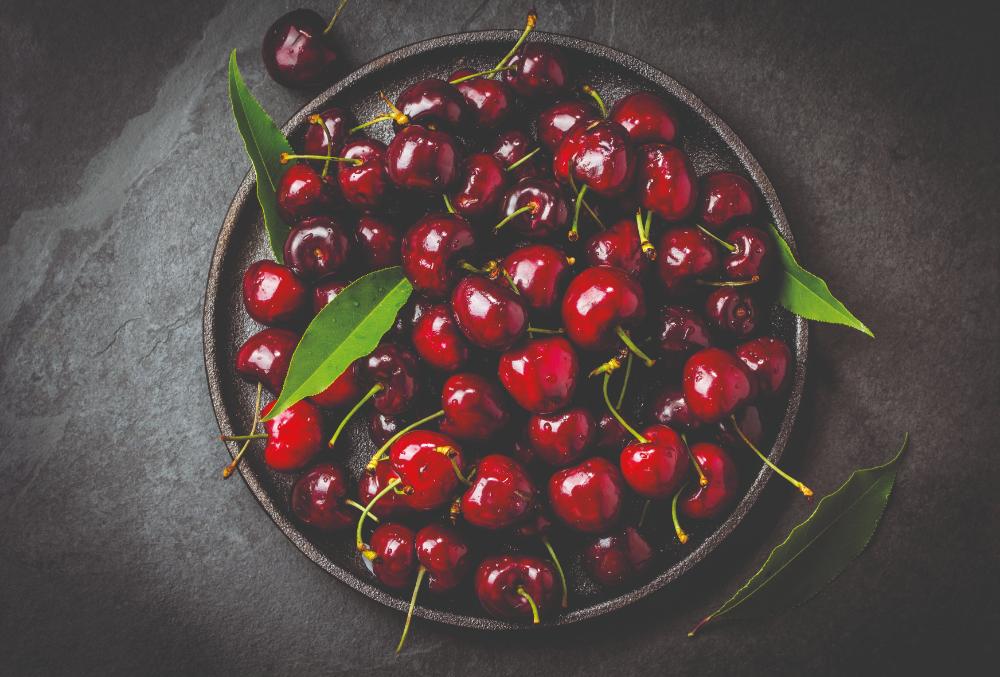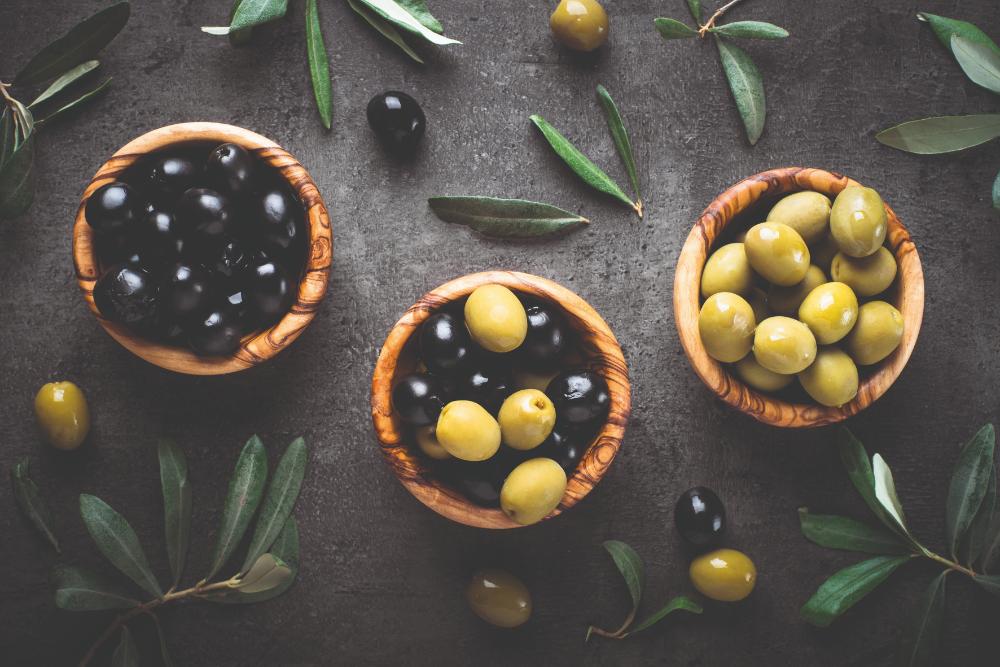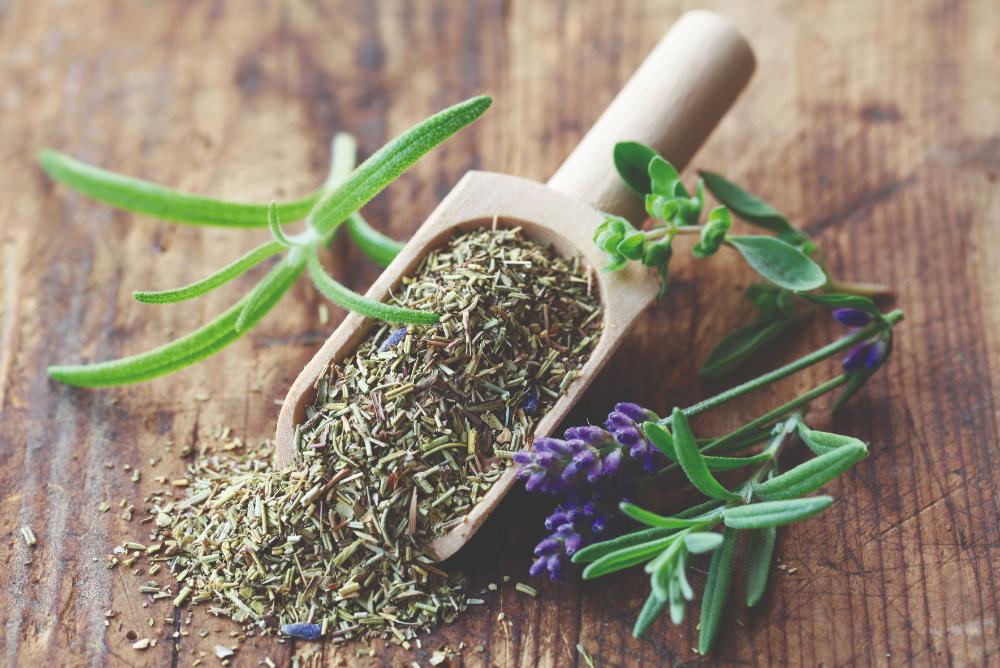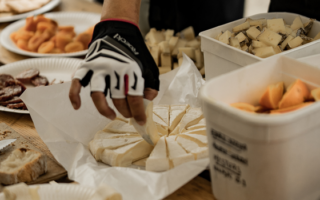
Cherries, Olives & Herbes de Provence: Key Summer Ingredients
France’s summer cuisine is characterized by vibrant flavours and fresh ingredients, with cherries, olives, and herbes de Provence playing starring roles in many beloved dishes.
Cherries
First comes the pastel pink beauty of blossom-bedecked cherry trees (cerisiers) in springtime. Throughout France, the marvel of the Prunus genre from the Rosaceae family is a sight for winter’s sore eyes as Mother Nature wakes up once more in printemps. Next comes the juicy stone fruit, the cherry (cerise), whose English name derives from Old Northern French or Norman cherise, itself derived from the Latin cerasum. It was first cultivated in Europe in 72 BC, having arrived from the Kerasous in what is now modern day Turkey. The cherry harvest season in France is reasonably short (around mid-May to mid-July, depending on the variety) and so is eagerly anticipated, such is the country’s passion for, and commitment to, seasonal produce.
Up and down the country, markets and supermarkets stock up on early growers, notably the stunning fruit from Céret in the Pyrénées-Orientales. Other notable varieties include the sweet bigarreaux varieties Burlat and Reverchon; then there are guignes, such as the Itxassou black cherry from the Pays Basque, and the lightly acidic or bitter griottes (keep an eye out for the Montmorency, which is grown in northern France).
Cherries 3 ways… Stone me, these classic cerise-centric treats are delicious
CLAFOUTIS AUX CERISES
The most famous cherry dish in France is from the Limousin and parts of Auvergne Its name comes from the Occitan clofotís, from the verb clafir or claufir, which means ‘to fill’. A simple baked batter made from flour, eggs, milk, sugar and fruit, it can be served hot or cold, accompanied by a sweet rosé, a sweet muscat de Beaumes-de-Venise or preferably a glass of champagne. Use Montmorency cherries for real authenticity.
COULIS
De-stone 330g of the fruit using a dénoyauteur à cerises (a painstaking but obviously essential process if you wish to avoid dental incidents) and simmer with the juice of half a lemon, half a cup of water and 50g of sugar. Once reduced and blended you have a lovely sticky sauce to accompany desserts such as crêpes, cheesecake, or chocolate cake. You can even pop a spoonful into your fizz. Cherry also pairs wonderfully with pistachio.
MAGRET DE CANARD
A thick, juicy duck breast cooked with its skin on is fairly fatty and so any sauce served alongside needs to have a touch of acidity to cut through it which makes certain cherries ideal. The sweet-salty combination in the sauce itself is a delight – you will need to cook down balsamic vinegar, butter, red wine, sugar, shallot, salt and pepper. The cherry sauce is also a great condiment for a buffet, where it can be served with pâtés and cold meats
TOP TIP
There is no greater pleasure than sitting with a bowl of cerises and gnawing away – mind those noyaux (stones) – but the fruit is also a versatile ingredient for a wide range of desserts and meat accompaniments.
Olives
So symbolic of Mediterranean cuisine, the humble olive – whose botanical name Olea europaea means ‘European olive’ in Latin – is the product of hundreds of different cultivars of the evergreen olive tree, with a specific cultivar carefully selected by the grower for use in olive oil, for eating, or both.
The French take their olive oil very seriously and are not afraid to pay top whack for a quality bottle of the pressed fruit. It is commonly used for frying but best known as the key ingredient in salad dressings – oil is invariably whisked with mustard and vinegar (red wine, white wine or cider).

The most popular way to eat olives in France is at apéro time – no pre-lunch or pre-dinner social gathering is complete without a small bowl of olives, served with a bundle of piques with which to spear the fruit. Olives are classified into three groups, based on the colour, which in turn depends on their maturity when harvested. The idea that some oliviers (olive trees) produce black olives and others, green ones, is a fallacy. The green ones are the youngest and firmest, and retain a slight bitterness (due to the phytochemical oleuropein) even though they have reached their maximum size. These are perhaps the most commonly served as an apéritif, usually de-stoned. Next come olives that are maturing from green to brown, and finally black ones, which are treated to remove the oleuropein and are sweeter and softer.
Olives 3 ways… France pays homage to olives in deliciously diverse ways…
OLIVES EN SAUMURE
Always committed to the ethos of fait maison (homemade), the French will often go about preparing their own apéro olives, in part to save money. Soak them in brine (called en saumure), using Ikg of black olives (the most celebrated in France are the AOP ones from Nyons), 4 litres of water, 400g of salt, a sprig of thyme, 3 bay leaves, a few coriander seeds and a branch of fennel. Store in sealed jars, and wait a few months before eating them.
APENADE
Still on the apéro theme, little toasted discs of baguette smothered in tapenade are a truly delcious addition to any nibbles table. Recipes vary greatly and you can be as adventurous as you wish, perhaps blending your chopped olives (green or black) with olive oil, minced garlic, anchovy and capers. Or, if time is your enemy, you can pop to any French supermarket and choose from any number of brands covering all budgets.
SALADE NIÇOISE
Slow-cooked olives pair beautifully with various meats, including chicken and lamb, in a range of sauces depending on the recipe’s region of origin (in Provence, for example, black olives go perfectly into a tomato sauce). But the most triumphant use of the olive is in the iconic Riviera dish, salade niçoise. Liberally spinkle some into your composition of tomatoes, hard- boiled egg, anchovy or tuna and drizzle with the best olive oil you can afford.
Herbes de Provence
The name says it all. Herbs from Provence: carefully measured proportions of dried aromatics that are used to flavour grilled meats or fish, stews (ragoûts) and soft goat’s cheese, whose recipes originate in the sunny southeast of France. You may be surprised to learn, however, that while the region’s cuisine has long made use of the wild (and, latterly, cultivated) herbs – such as thyme, marjoram, oregano, rosemary, basil, chervil, tarragon, lovage, savory, sage, bay leaf and fennel – their mass commercial sale in little pots found in everyone’s store cupboard, is a fairly recent phenomenon from the 1960s. A certain Monsieur Ducros lays claim to being behind the combination’s origin, and his family firm remains a leading purveyor to this day.

Herbes de Provence as a foodstuff has no official ‘protected’ status, which means that anyone can make and market the product and much of the herbes de Provence sold in France these days do not come from Provence, let alone France, at all, but from eastern European countries such as Poland and Albania. Purists can, however, track down the Label Rouge (Red Label) version whose recipe is composed of 27% rosemary, 27% oregano, 27% savory and 19% thyme. “All the products are authentic with a guaranteed Provence origin and an incomparable aromatic quality,” is the label’s message of traceability.
Herbes de Provence 3 ways…
TARTINES CHÈVRE
From the region where goats roam the scrubland and not cows (there’s not much grass!), goat’s cheese pairs wonderfully with herbes de Provence but only when used sparingly Take some semi-affiné (neither soft nor mature) cheese and sprinkle on some herbes for an apétitif or starter evoking the sun- kissed garrique (the vegetation specific to the Mediterranean). Also available commercially via brands like Soignon.
TIAN DE LÉGUMES
No Provençal dish is as attractive when served at the table as a colourful tian of vegetables: lovingly arranged rows of sliced aubergines, courgettes and tomatoes liberally doused with herbes de Provence and a good splash of olive oil, then roasted.
Don’t forget to provide plenty of baguette with which to mop up those aroma-infused
juices. Naturally, a glass or two of nicely chilled Provençal rosé wine is the only thing to serve to your guests.
FOUGASSE
Focaccia’s name and origins are clearly Italian (specifically Ligurian) but given the proximity of the Italian border with France, this flat bread is commonly found in France’s southeastern corner too, where it is called fougasse. While focaccia is usually seasoned with olive oil and salt, and may be garnished with onion, cheese, meat or vegetables, fougasse is truly delicious when adorned with olives and some herbes de Provence.
TOP TIP
Some producers add super-fragrant lavender to the mix, so always check.
Latest Posts:
- Sardines and onions summer tart
- Brocciu-stuffed sardines
- Mayors banquet: 2 Tonnes of Salmon & 33,000 Bottles of Wine
- Duck liver flan with port coulis
- “Keep your teeth for the cheese”: France’s tastiest mountain biking trail
Lead photo credit : © Shutterstock
Share to: Facebook Twitter LinkedIn Email
More in Cherries, French food, Herbes de Provence, Herbs, Olives, Summer



